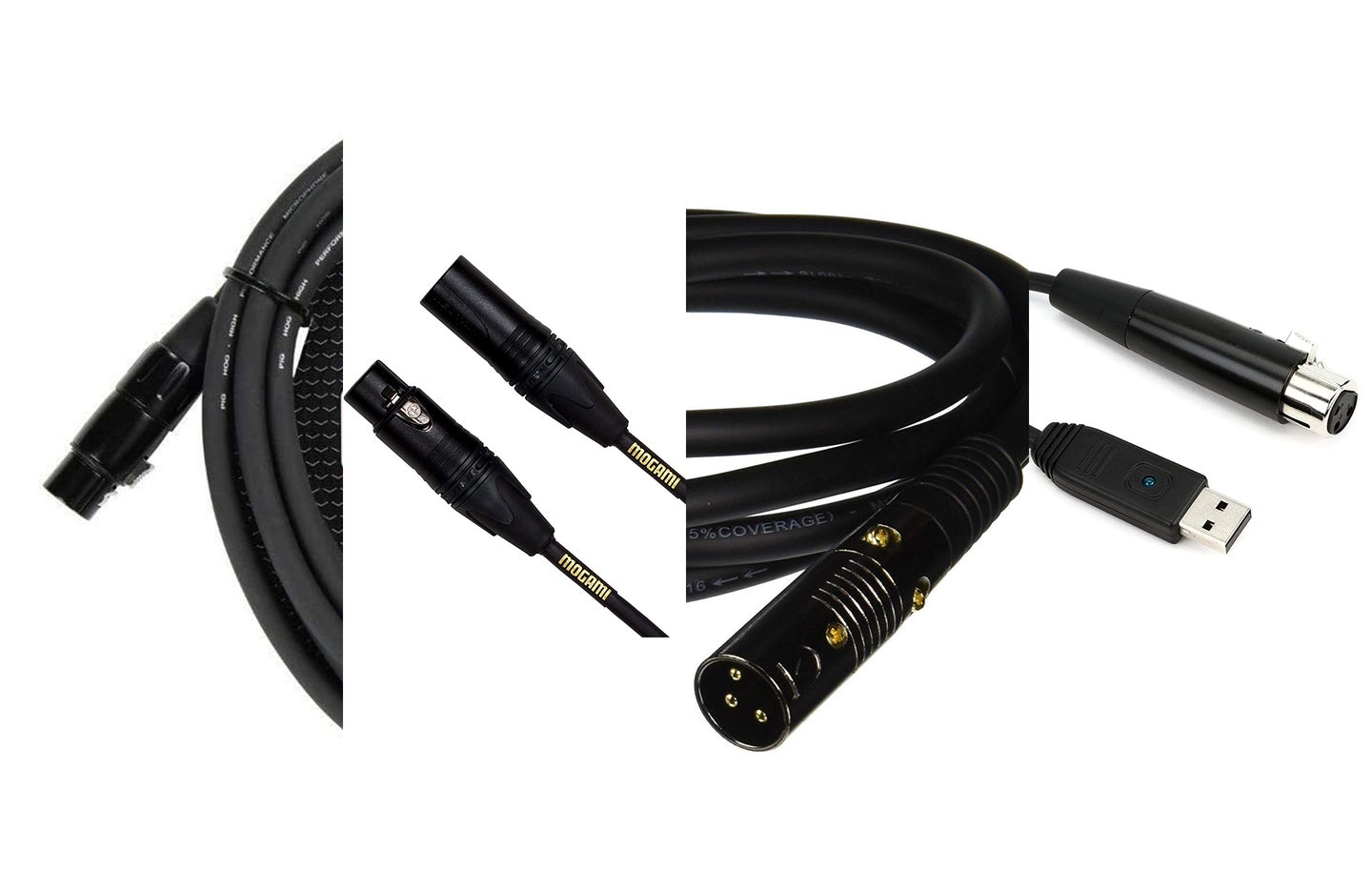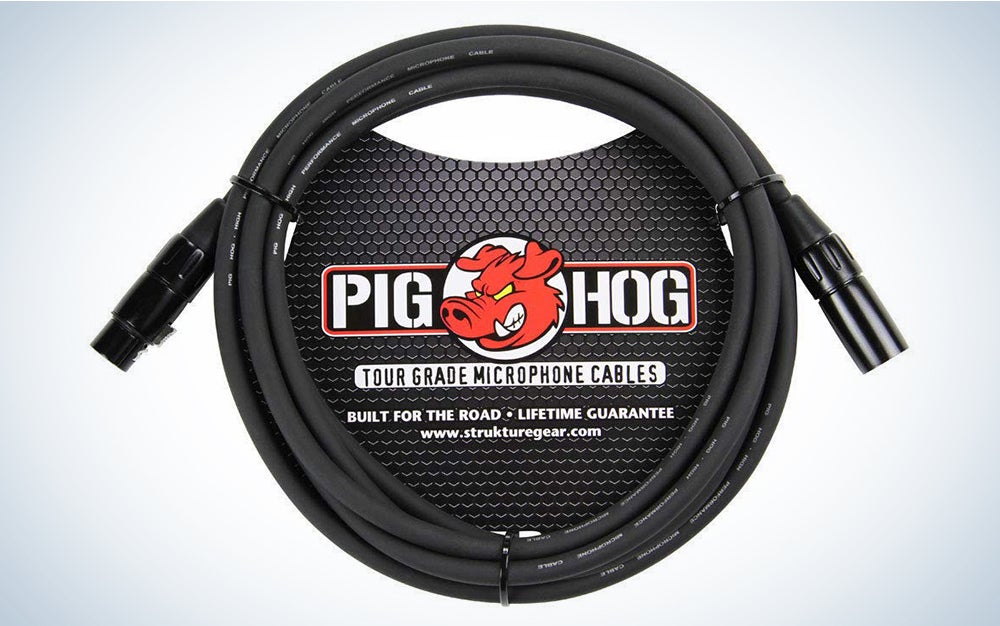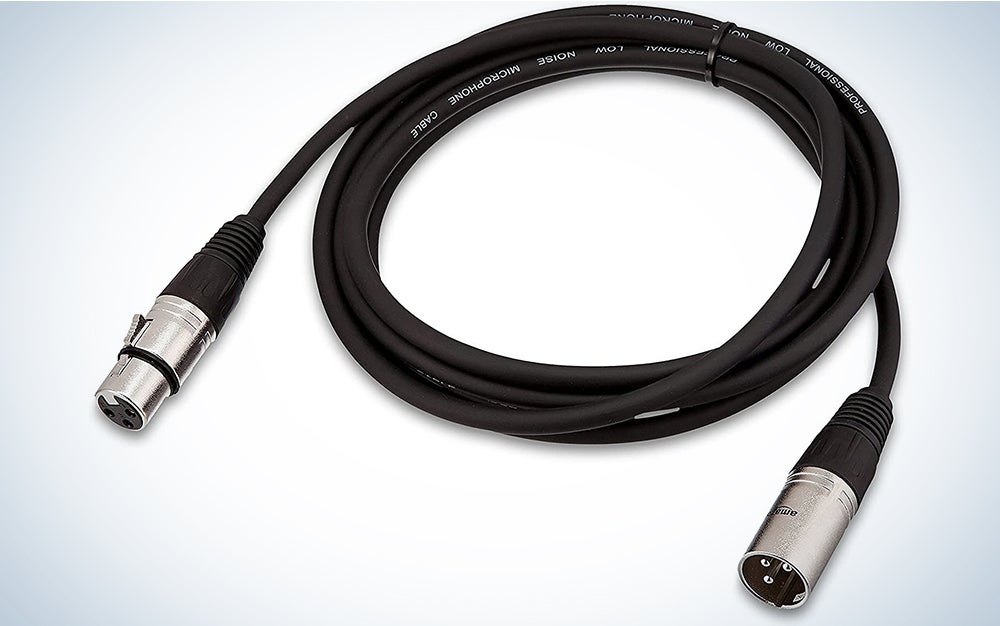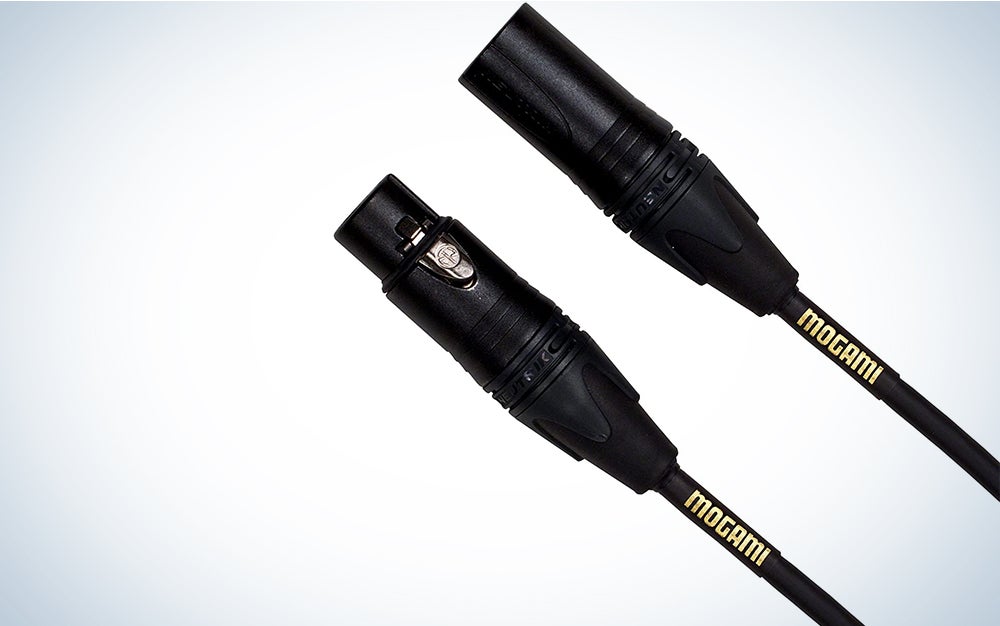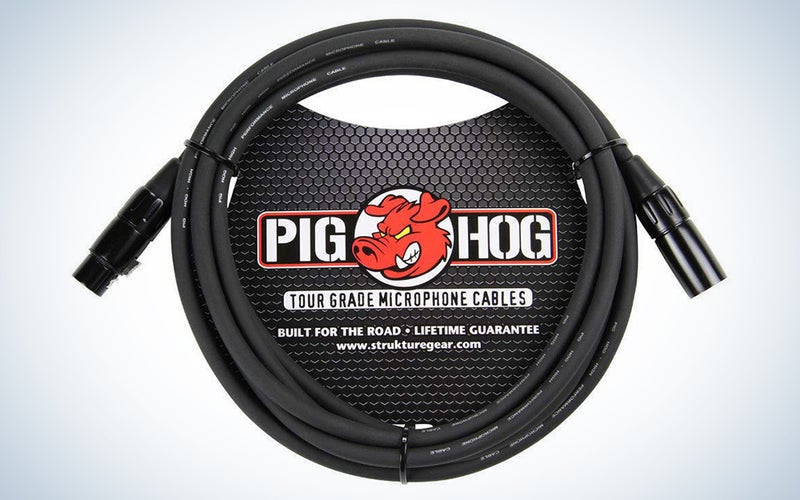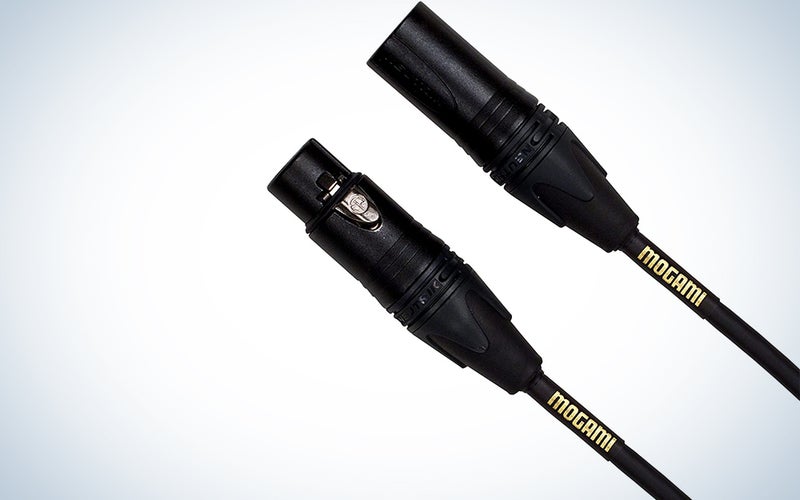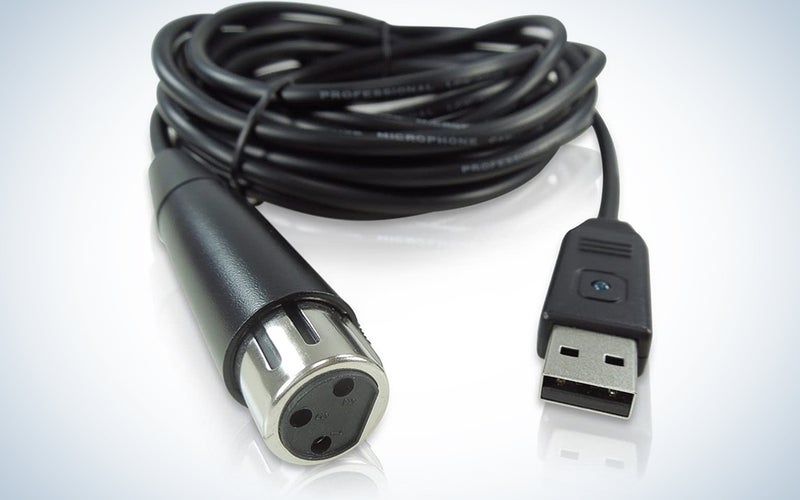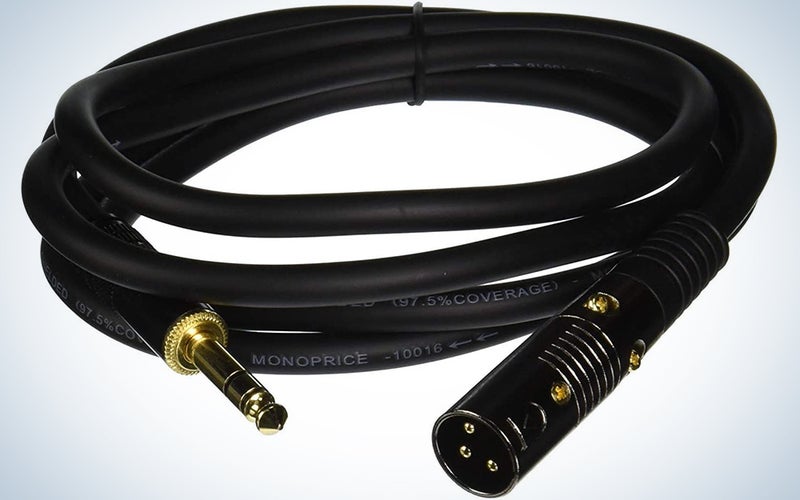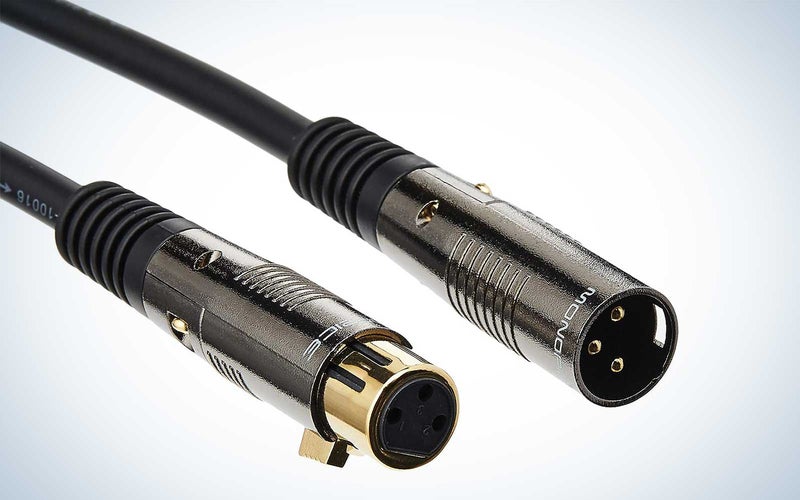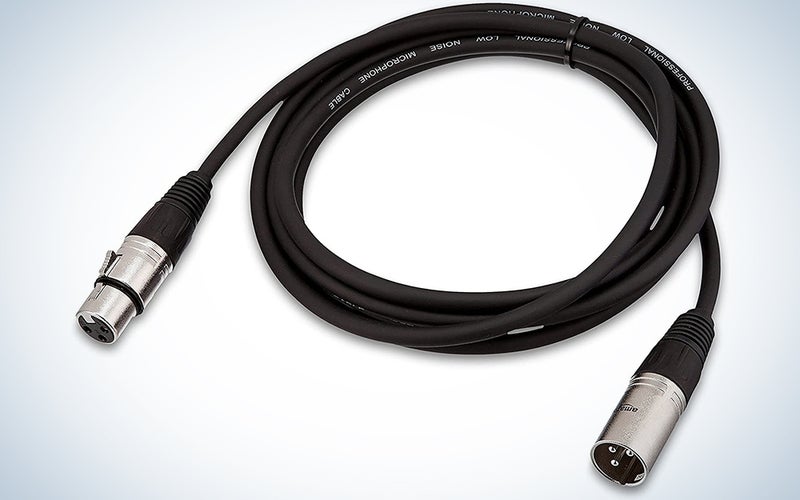We may earn revenue from the products available on this page and participate in affiliate programs. Learn more ›
If you’ve ever used a piece of pro audio gear, you’ve most likely encountered an XLR cable at some point. Inventor James H. Cannon first developed the now-ubiquitous XLR connector in the 1930s as a compact adaptation of his company’s widely used multi-contact electrical plugs. Since then, XLR connectors have become an audio industry standard for passing signals between professional equipment of every conceivable type, appearing at the ends of most microphones and on the inputs of mixers, speakers, and audio interfaces. While XLR cables come in a wide variety of pin configurations, these recommendations are for the three-pin type that’s most commonly encountered in pro audio settings. Whether you’re looking to amass a collection of cables for an entire recording studio or just need to plug in a single microphone, we’ll help you find the best XLR cable for your needs and pass along a few things to consider when purchasing.
- Best overall: Pig Hog PHM15 Tour-Grade XLR Cable
- Best upgrade: Mogami Gold Studio-15 XLR Cable
- Best XLR-to-USB: Behringer MIC2USB
- Best XLR-to-1/4-inch: Monoprice Premier Series XLR Male-to-TRS Male Cable
- Best value: Monoprice XLR Male to XLR Female Cable
- Best budget: AmazonBasics XLR Cable
How we chose the best XLR cables
When selecting our picks, we looked at the scenarios users likely encounter, did market research, referenced product impressions and peer recommendation, and then combined all that with our own first-hand experiences to determine the cables that deliver the cleanest signal and feature the fewest potential failure points or parts that might come loose.
The best XLR cables: Reviews & Recommendations
Three-pin XLR cables are a pro preference due to their ability to carry robust audio signals. Unlike standard instrument cables and RCA cables, which carry a grounding wire plus a single signal wire, balanced XLR cables feature three conductors: a ground wire, a positive wire, and a negative wire. In this balanced design, the presence of signal on both the positive and negative wires allows for improved noise reduction over unbalanced designs. Due to the relatively delicate nature of their parts, wires, and internal electrical connections, an XLR cable should be built durable enough to withstand a reasonable amount of coiling, twisting, moving, and general use without risk of breaking. These are our top picks for the best XLR cables when you need reliable routing.
Best overall: Pig Hog PHM15
Pig Hog
Why it made the cut: This XLR cable from Pig Hog features exceptionally thick construction built to withstand the rigors of long-term use.
Specs
- Connectors: XLR male and XLR female
- Double-shielded: Yes
Pros
- Thick gauge
- Durable connectors
- Shielded
Cons
- Bulky
This XLR cable from Pig Hog comes in a variety of lengths ranging from 3 feet to 50 feet and is available in bulk packs of up to 10, making it an efficient and cost-effective choice whether you’re outfitting a large operation or just need a couple for casual use. Its gauge of 14 AWG is well above the industry average cable thickness, making it more likely to survive repeated kinking and twisting. For this reason, the Pig Hog is an excellent option for stage and touring use in particular.
Users should note that while the Pig Hog is one of the best XLR cables overall, its thickness comes with extra weight and bulk that makes storage a bit trickier whether it’s hung on the wall or stowed in a bin. Of equal importance is an audio cable’s ability to flex under doors, through wall ports, and in the cramped spaces behind equipment, and this cable may be a bit too bulky for those applications.
Best upgrade: Mogami Gold Studio-15 XLR Cable
Mogami
Why it made the cut: Mogami manufactures top-of-the-line cables with an extra layer of internal shielding for maximum interference reduction.
Specs
- Connectors: XLR male and XLR female
- Shielded: Yes
Pros
- Neutrik connectors
- Gold-plated contacts
- extra copper shielding
Cons
- Expensive
If you can afford to spend a little more, Mogami’s XLR cables are some of the absolute best that money can buy. They’re built from the highest quality components, featuring Neutrik locking ends for sturdy connections, gold-plated contacts for improved conductivity, and an extra insulating layer of copper shielding. All this is packed into a durable yet flexible 24 AWG rubber housing with heat shrink at each end.
Mogami’s cabling is known for providing some of the most reliable and noise-free performance on the market. Still, this reputation and quality come at a significant cost over other brands that can be hard for hobbyists and DIY-ers to justify. If you want a cable that consistently produces low-noise audio—and has a very low chance of cutting out, getting stuck, or breaking—the extra cost of the Mogami may be worth it.
Best XLR-to-USB: Behringer MIC2USB
Behringer
Why it made the cut: The Behringer MIC2USB turns any dynamic microphone into a USB mic.
Specs
- Connectors: USB male and XLR female
- Shielded: No
Pros
- Plug-and-play
- Direct microphone-to-computer connection
Cons
- Only works with dynamic mics
- Sample rate limited to 44.1 kHz
- Thin gauge
Users who want to circumvent the time, bulk, and cost of collecting recording equipment will appreciate this novel computer recording solution from Behringer that integrates a simple audio interface and an XLR cable into a single product. It’s 5-meters long and offers CD-quality analog-to-digital conversion on Mac and Windows without the need for drivers—simply plug in a microphone, open your recording software of choice, and begin recording. If you need a decent option for light content creation duties, already have a microphone, and aren’t ready to spring for a USB mic, this may be exactly what you need.
While the MIC2USB is all about convenience and delivers it on some level, it’s really more of a quick-fix item than an appropriate replacement for a dedicated audio interface. It offers users no control over aspects of analog-to-digital conversion, nor does it include a headphone output for monitoring. Additionally, it only works with dynamic mics due to its inability to pass phantom power, which is required by condenser microphones. If you’re looking for a long-term professional solution for computer recording, opt instead for a standard XLR cable and a simple audio interface.
Best XLR-to-1/4-inch: Monoprice Premier Series XLR Male-to-TRS Male Cable
Monoprice
Why it made the cut: If you’re looking to connect balanced, line-level equipment like stereo receivers, speakers, and mixers, this XLR-to-TRS cable from Monoprice is one of the best-designed cables for the job.
Specs
- Connectors: XLR male and TRS male
- Shielded: Yes
Pros
- Thick gauge
- Gold-plated connectors
- Reinforced shielding
Cons
- Connector screws may loosen
TRS, or 1/4-inch balanced connectors, contain three conductors and are used industry-wide for carrying the exact same types of signal as XLRs. This XLR-to-1/4-inch cable from Monoprice features gold-plated connectors, robust internal shielding, and a thick 16 AWG gauge to offer good protection from electrical interference and great durability when used in critical applications. If you’ll be connecting balanced gear with mismatched inputs and outputs, this cable covers the most common applications.
Unlike other designs that fasten together without small parts, the XLR connector on this cable features a housing that’s held together by screws. While these provide reasonably convenient access to the cable’s internal parts for repairs and maintenance, the screws can come loose over time and affect both the reliability and durability of the cable. This is nothing to worry about if you’re using this cable for a semi-permanent purpose, such as installing a home stereo, but if you’re going to use it for repeatedly connecting and disconnecting gear, consider a Mogami Gold Series cable, which has Neutrik connectors.
Best value: Monoprice XLR Male to XLR Female Cable
Monoprice
Why it made the cut: This no-frills cable provides rock-solid performance for a solid price while skipping the elaborate packaging.
Specs
- Connectors: XLR male and XLR female
- Shielded: Yes
Pros
- Simple packaging cuts down on waste
- Rock solid performance
- Thicker than most value-oriented cables
- Gold-plated connectors
Cons
- Added thickness also makes it heavier
Cheap cables are a gamble, but this 15-foot cable offers thick, durable construction and extremely reliable performance without busting up your band budget. The braided, shielded cables combat both EF and RF noise so that you won’t get annoying interference during a session. The 16-awg cable is heavy, which makes it durable and reliable. That’s great when you’re plugged in and playing, but can be a bit cumbersome when you’re lugging your gear or setting up. Still, that extra weight and sturdiness adds an element of security that other cheap cables can’t provide. The gold-plated connectors provide an impeccable connection. You can get longer cables for cheaper, but it’s hard to math this mix of performance and durability for the price. Plus, it comes in basic packaging, so there’s less waste than with some other brands.
Best budget: AmazonBasics XLR Cable
AmazonBasics
Why it made the cut: This XLR cable from Amazon’s own brand offers good components and a quality build at a value price.
Specs
- Connectors: XLR male and XLR female
- Shielded: Yes
Pros
- Good value
- Connectors without small parts
Cons
- Thin shielding
- Built from budget components
AmazonBasics is known for offering a vast array of budget-friendly essentials at good quality, and the brand’s XLR cables certainly fit that reputation. Each connector on these XLR cables is built from minimal parts without screws and closely resembles the design of industry-standard connectors from Neutrik. A 6mm PVC jacket around a layer of spiraled copper shielding protects the cable’s internal conductors, though the shielding is not particularly thick, which may result in more RF interference.
While this cable is constructed from components that mirror high-end offerings and should last a long time if treated with care, they’re not guaranteed to be as robust or reliable as more expensive cables manufactured with premium components and high-level quality control. This may not be an issue for casual users—and these are certainly a good choice for light duties—but if you require prolonged reliability in critical environments, you may want to spring for a more durable cable, or at least invest in a soldering iron to handle any repair needs that arise.
Things to consider when buying one of the best XLR cables
The wires inside an XLR cable are incredibly small, and each is soldered to its respective pin at both connector ends. For this reason, the strength of the solder points, the cable, and the connector itself are of high importance when trying to find the best XLR cable. Most of the cables on this list feature simple connectors, as well as connector housings that sit flush with the cable surface to keep out dust and debris.
How many XLR cables do you need?
Quantity is an important consideration when searching for the best XLR cable for your needs. If you are setting up a rehearsal space, a live venue, or a recording studio, you’ll likely benefit from a bulk XLR cable package such as that offered by Pig Hog. More expensive cabling like that offered by Mogami will cost much more to purchase in bulk. Still, its lasting durability and quality may eliminate the need to otherwise repeatedly replace cheaper cables as they fail.
What type of equipment are you connecting?
Nearly all microphones use XLR connectors, as do most sound mixers and pro audio interfaces. Some amplifiers, sound mixers, speakers, and stereo receivers also use TRS connectors to receive balanced signals, so it’s important to verify what type of connection you’re looking to make before you make your purchase. Also important to note is that while most equipment connections require a male-to-female cable, some connections may require a male-to-male cable, such as that from an audio interface to a powered speaker.
Are you going to be making repeated connections?
Durability is an important quality to consider if you’re going to be repeatedly connecting, disconnecting, and storing your XLR cables. In situations where cables are plugged in and left there, such as podcasting setups or behind home stereos, connector quality isn’t of the utmost importance. For studio and stage work where equipment is constantly set up and torn down, however, choosing a cable with more robust connectors will lower the likelihood of cables becoming stuck in equipment or the internal connections failing.
FAQs
Q: How much does an XLR cable cost?
Depending on the materials and/or length of the cable, prices can run from $5 on the budget, short end to $225 on the top-tier, long end.
Q: What does XLR stand for?
The term XLR originated in the connector’s early days at Cannon Electric. “X” referred to the company’s particular series of connectors, with “L” specifying the presence of a latch mechanism, and “R” representing the use of a rubber compound. Some sources suggest XLR stands for “external line return,” but this is a misnomer that disregards the connector’s extensive use as a means of carrying audio signals of every type and nature.
Q: What’s the best XLR cable for powered speakers?
Powered speakers, or studio monitors like the Pioneer VM-50, most often accept either or both XLR and 1/4-inch TRS inputs, so the best XLR cable for your situation depends on the connectors on both your speakers and your output device. Pro audio interfaces and home stereo receivers usually have TRS line outputs, while sound mixers have some combination of both XLR and TRS outputs. For most applications, an XLR-to-1/4-inch cable is the right choice for powered speakers, but be sure to read the manuals for your equipment and verify its input and output connectors before buying a cable.
Q: What’s the best XLR cable for hi-fi sound?
The Mogami Gold Series XLR is one of the best XLR cables for high-fidelity sound thanks to its gold-plated contacts and extra internal layer of copper shielding. When shopping for a hi-fi XLR cable, extra shielding is a particularly valuable feature to look for, as all cabling is naturally susceptible to picking up RF interference and becoming noisy.
Final thoughts on the best XLR cables for your audio setup
- Best overall: Pig Hog PHM15 Tour-Grade XLR Cable
- Best upgrade: Mogami Gold Studio-15 XLR Cable
- Best XLR-to-USB: Behringer MIC2USB
- Best XLR-to-1/4-inch: Monoprice Premier Series XLR Male-to-TRS Male Cable
- Best value: Monoprice XLR Male-to-XLR Female Cable
- Best budget: AmazonBasics XLR Cable
From hi-fi home stereos to mixing consoles, for microphones and recording interfaces, XLR cables are one of the prevailing tools for connecting sound equipment and carrying balanced audio signals. Budget XLR cables are great for keeping on hand as spares or installing in semi-permanent setups, while higher-quality cables are reinforced for durability and offer better shielding from electrical interference. Wherever your next creative endeavor takes you, find the best XLR cable to reliably connect your equipment so you can focus on the big picture.
Why trust us
Popular Science started writing about technology more than 150 years ago. There was no such thing as “gadget writing” when we published our first issue in 1872, but if there was, our mission to demystify the world of innovation for everyday readers means we would have been all over it. Here in the present, PopSci is fully committed to helping readers navigate the increasingly intimidating array of devices on the market right now.
Our writers and editors have combined decades of experience covering and reviewing consumer electronics. We each have our own obsessive specialties—from high-end audio to video games to cameras and beyond—but when we’re reviewing devices outside of our immediate wheelhouses, we do our best to seek out trustworthy voices and opinions to help guide people to the very best recommendations. We know we don’t know everything, but we’re excited to live through the analysis paralysis that internet shopping can spur so readers don’t have to.
